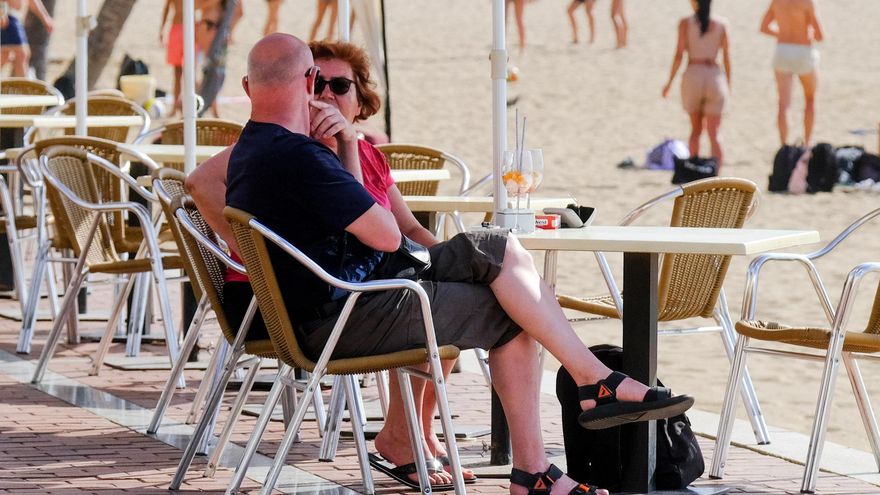
The Canary Islands economy experienced growth of 7.4% in the first quarter of the year, supported by the good performance of tourism, which set record numbers in the arrival of international visitors. An increase in the Gross Domestic Product (GDP) that was well above the national average, which stood at 3.8%. These are data that banish the bad omens that existed regarding the future of the economy, in a year in which it was not known how it was going to behave due to inflation and the measures that have been taken to counteract it, such as the rise in interest rates interest.
“The Canarian economy has continued to show dynamism above what we initially expected,” reaffirmed Santiago Sesé, president of the Santa Cruz de Tenerife Chamber of Commerce, during the presentation of the Economic Situation Bulletin for the first quarter. Something that he mainly attributes “to the clear leadership on the part of the tourist activity.” And it seems that the bad forecasts that could have existed for the rest of the year are also dissipating, since everything points to the fact that the economy may maintain a sustained trend throughout 2023, depending on the expected connectivity and the already existing reserves. confirmed for the summer and also for the start of the winter season. Of course, Sesé warned that the Canary Islands will not grow as much this year as it did last year and at the end of the year the rise in GDP could be around 3%.
The general director of the Chamber, Lola Pérez, was in charge of breaking down the details of the report that confirms that the Archipelago has had eight consecutive quarters of growth after the pandemic. He highlighted that in January, February and March there was a good evolution of all indicators of economic activity. Retail sales grew by 11.9%, something that also led to the improvement in employment in the sector. Passenger car registrations recorded the highest figure in the historical series for a first quarter, 16,546 transactions. The purchase and sale of housing continued to grow strongly and 6,875 operations were closed and in terms of mortgages they also grew by 7%. Affiliates to Social Security in the hospitality industry are also at all-time highs, reaching 155,000 and the turnover in the services sector is 18.4% above last year.
PEro Pérez stressed that tourism continues to be the “true locomotive” of the Canarian economy. Between January and March, 3.7 million tourists were received, surpassing the best record for this period that occurred in 2018. Total spending has risen 28% to 5,417 million euros, partly derived from inflation, but also due to the increase in travelers and their disbursement.
Manuel Afonso, territorial director of Caixabank in the Canary Islands, was also surprised by the good data that the Canary Islands have reaped in this first quarter. Afonso confirmed that the much feared drop in consumption due to inflation, at least for now, has not occurred. “Consumption with a card increased by around 11% compared to the first quarter of 2022”, but not only in the retail sector but also in leisure and restaurants. Spending made in the Canary Islands with foreign cards was also 29% higher than last year.
Rejection of tourismphobia
The businessmen wanted to launch a message yesterday again against tourismophobia that they believe is beginning to larvae in some sectors of Canarian society, after the return to normality of activity after the pandemic. The president of the Chamber of Commerce of Santa Cruz de Tenerife, Santiago Sesé, yesterday branded as “irresponsible” the call for the demonstration in the south of Tenerife last Saturday by nine environmental and conservationist groups. Protest in which posters with slogans such as “Uncontrolled tourism kills the Islands”, “Tourism yes, but not like this”, “Canary Islands are not sold” or “Tourist go home (Tourist go home)” and in the there were moments of tension between the participants and some visitors. Sesé criticized that the protest sought “a short-term political objective” but in return actions like this “could put the image of the main economic engine of the Islands at risk.” DG
















